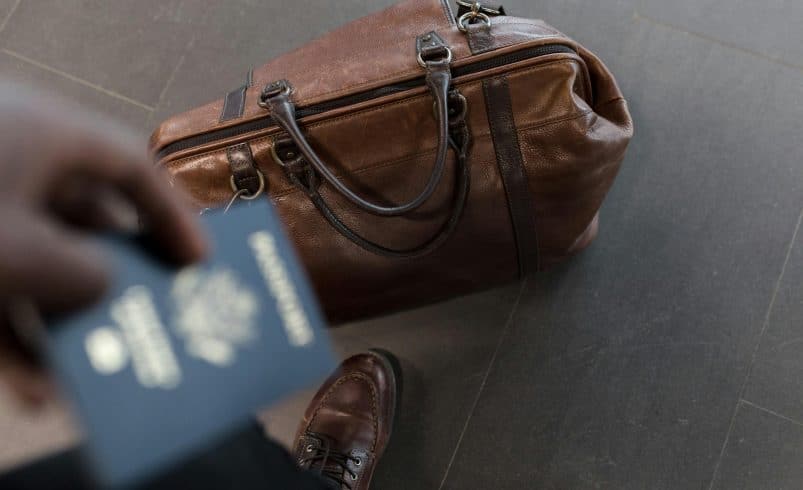Airport Transfer Costs: Smart DIY Alternatives to Save Money
- August 18, 2025
- 0
According to recent travel data, airport transfer services can eat up to 20% of your travel budget in major cities. As a frequent traveler, I’ve learned the hard
According to recent travel data, airport transfer services can eat up to 20% of your travel budget in major cities. As a frequent traveler, I’ve learned the hard

According to recent travel data, airport transfer services can eat up to 20% of your travel budget in major cities. As a frequent traveler, I’ve learned the hard way that convenience often comes with a hefty price tag. But there’s good news – with some strategic planning, you can slash these costs significantly while maintaining comfort and reliability.
Airport transfer services operate on complex pricing models that vary significantly across locations and providers. Standard rates typically start with a base fare, which ranges from $20 to $100 depending on the city and service level. Premium services in major metropolitan areas like London, New York, or Tokyo command higher prices, often 30-50% above standard rates.
Hidden fees frequently catch travelers off guard. Common surcharges include meet-and-greet services ($10-30), late-night operations (15-25% premium), and additional passenger fees ($5-15 per person). Luggage handling charges may apply for extra bags, while some companies add fuel surcharges or highway tolls to the final bill.
Peak pricing dramatically impacts transfer costs. Morning rush hours (6-9 AM) and evening commute times (4-7 PM) typically incur 20-40% higher rates. Holiday seasons and major events can double standard fares, particularly in tourist-heavy destinations.
Location-specific factors create substantial price variations. Airport distance from city centers significantly influences base rates. Cities with regulated taxi services often offer more predictable pricing, while those with limited competition tend to have higher fares. Weather conditions, traffic patterns, and local regulations also affect pricing structures.
Late-night arrivals present compelling reasons for choosing traditional transfer services. Professional drivers familiar with local routes provide enhanced security, especially in unfamiliar cities. Pre-arranged services eliminate the uncertainty of finding transportation during off-hours when public options may be limited or unavailable.
Group travel economics often favor traditional transfers. With 4-6 passengers, private transfers can become cost-competitive with individual public transportation tickets. Shared luggage space and door-to-door service add considerable value for groups traveling together.
Business travelers find traditional services particularly advantageous. Corporate accounts often negotiate preferential rates, while expense policies typically cover higher-end transfer options. The reliability and professionalism of established services align with business travel requirements.
Remote destinations or airports with limited public transportation make traditional transfers essential. Some locations lack reliable alternatives, while others require specialized knowledge of local routes and conditions that professional drivers possess.
Public transit systems offer substantial savings in many cities. Express trains like Hong Kong’s Airport Express or London’s Heathrow Express provide rapid, cost-effective airport connections. Integration with local metro systems enables seamless travel to final destinations.
Ride-sharing platforms revolutionize airport transfers with competitive pricing and convenience. Local apps in different countries often offer better rates than international platforms. Multiple service tiers accommodate various budget levels and comfort preferences.
Shuttle services bridge the gap between private transfers and public transportation. Scheduled departures serve popular hotel districts and city centers, while shared rides reduce individual costs. Many airports operate official shuttle services with standardized pricing.
Car rental considerations extend beyond daily rates. Parking fees, fuel costs, and one-way rental charges affect total expenses. Urban congestion and unfamiliar traffic patterns may offset potential savings in some locations.
Transportation research requires thorough investigation of local options. Official airport websites provide comprehensive information about available services. Online forums and travel communities offer practical insights from experienced travelers.
Total cost calculations must include ancillary expenses. Public transportation often requires separate tickets for different segments. Time spent in transit translates to additional accommodation costs for early departures or late arrivals.
Schedule management impacts transfer choices significantly. Buffer times for immigration, customs, and baggage claim affect departure timing. Connection windows between different transportation modes require careful planning.
Luggage handling demands strategic consideration. Storage space availability on public transport varies widely. Heavy or numerous bags may necessitate premium services despite higher costs.
Early booking generates substantial savings. Many services offer 10-30% discounts for advance reservations. Seasonal promotions and off-peak travel times provide additional opportunities for cost reduction.
Mixed transportation methods often optimize both cost and convenience. Express trains combined with local transport or ride-sharing services can reduce total expenses while maintaining efficiency.
Group coordination unlocks various savings opportunities. Shared private transfers spread costs among participants. Group rates on scheduled services offer significant discounts compared to individual tickets.
Travel programs provide cumulative benefits. Airport loyalty schemes include transfer discounts. City passes often combine airport transfers with local transportation options.
Provider verification ensures service quality. Licensed operators display proper credentials and insurance coverage. Online reviews and ratings provide insights into service reliability.
Contingency planning prevents travel disruptions. Alternative transport options address potential service failures. Downloaded maps and offline navigation tools support backup plans.
Digital tracking enhances transfer security. Many services offer real-time vehicle monitoring. Mobile apps provide direct communication with drivers and support teams.
Emergency preparations include local contact information. Police and transportation authority numbers should be readily available. Embassy or consulate details provide additional support resources when needed.
The choice between professional airport transfers and DIY options ultimately depends on your specific circumstances. Consider your budget, time constraints, and comfort level with local transportation. Remember that mixing different transport methods often yields the best balance of cost and convenience. For your next trip, start planning your airport transfer strategy at least a week in advance to maximize savings and minimize stress.